"Soviet troops fought for every inch of land ..."
By mid-August 1942, the situation of Stalingrad became critical. On August 19, 1942, two Wehrmacht strike groups went on the offensive and broke through the Soviet defenses. By the evening of August 23, the advanced units of the 6th German army reached the Volga northwest of the city, on the site of the villages of Erzovka and Rynok. German Tanks were at the tractor factory. They were followed by the German infantry. The Germans immediately tried to break into the city through the northern outskirts. German at the same time aviation made a massive raid on the city. In just one day, more than 2 thousand sorties were made. Air raids throughout the war did not reach such power. The huge city, stretching for 50 km, was embraced by a terrible fire. The central part of the city was completely destroyed, killing tens of thousands of people who had not yet been evacuated.
Vasilevsky, representative of the Supreme High Command Headquarters, recalled: “The morning of the unforgettable tragedy of August 23 found me in the troops of the 62nd Army. On this day, the Nazi forces managed to reach the Volga with their tank units and cut off the 62nd Army from the main forces of the Stalingrad Front. Simultaneously with the breakthrough of our defense, the enemy launched a fierce mass bombardment of the city on August 23 and 24, for which almost all the forces of his 4th air force fleet. The city turned into ruins. Telephone and telegraph communications were disrupted, and during August 23 I had to conduct short negotiations twice with the Supreme Commander-in-Chief openly on the radio. ”
The population was sheltering in ravines and basements. By the end of August there were over 400 thousand inhabitants in the city. In addition, Stalingrad was packed with refugees from the western regions; no one knew the exact number. According to some information, it reached 600 thousand people. The officers of the General Staff, who had studied the situation in Stalingrad on the instructions of the General Headquarters, reported: “The city is overpopulated. It even got to the point that people live under the fences, in the gardens, on the banks of the r. Volga, in boats, etc. The evacuation of the city is too slow due to the lack of a sufficient number of vehicles and the poor work of the evacuation bureau ... All schools and clubs are overcrowded with the wounded. Hospitals remain in the city. Blackout is bad ... ".
From 24 August to 14 September, about 300 thousand were transported outside the Volga. But this number included wounded soldiers, hospital personnel, rear facilities, refugees from other areas, and about 60 thousand city recruits under 50 years (they will be back soon). Therefore, a large number of civilians remained in Stalingrad - workers of defense enterprises, who continued to work even in urban fights, women, children and the elderly. Grown men were mostly drafted into the army. From bombing and shelling from August to October, according to incomplete data, almost 43 thousands of civilians died, tens of thousands were injured.
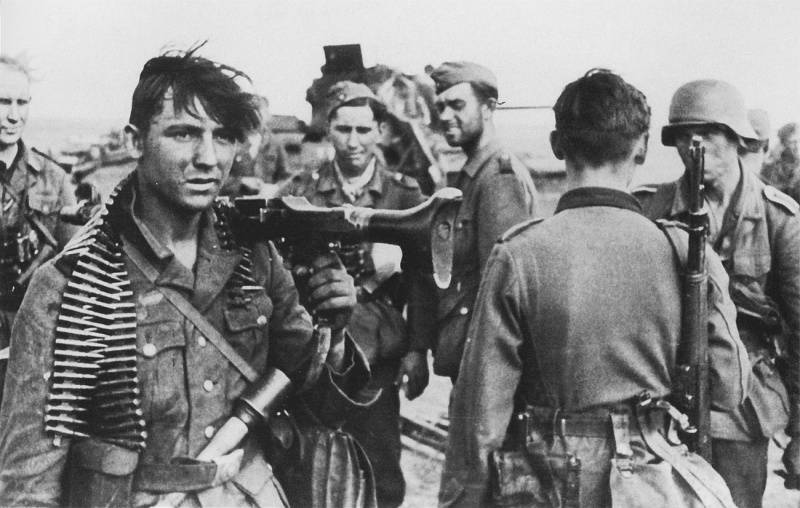
Panzergrenadery 16-th Panzer Division of the Wehrmacht, left to the bank of the Volga near Stalingrad
Battle at the walls of Stalingrad
The battle at the walls of the city became extremely tense and violent. These days, the city defense committee, headed by A. S. Chuyanov, secretary of the Stalingrad regional party committee, addressed the city’s population with an appeal: “Dear comrades! Native Stalingrad! Again, like 24 years ago, our city is going through hard days. Bloody Nazis rush to sunny Stalingrad to the great Russian river Volga. Stalingraders! Do not give up his native city to reproach the Germans. Let us stand all as one to protect the beloved city, home, native family. We cover all the streets with impassable barricades. Let's make every house, every quarter, every street an unassailable fortress. Go out all the construction barricades. Barricade every street. In the terrible 1918 year, our fathers defended Tsaritsyn. And we will defend in 1942, the Red Banner Stalingrad! All on the construction of barricades! Anyone who is able to wear weapon, to defend his native city, native home! " Thousands of Stalingrad members joined the ranks of the 62 and 64 armies, defending their hometown.
The Soviet command had to take emergency measures to prevent the fall of the city. Without expecting a full concentration of reserves, a shock group was created in the Kotlubani area. It consisted of 28 tank corps, 169-I tank brigade, 35-I, 27-I Guards and 298-I divisions. The 4 and 16 tank corps and rifle formations from the Betting reserve were on the way. This group, headed by the Deputy Commander of the Stalingrad Front, Major General K. A. Kovalenko, was to strike south-west, close the breakthrough from Kotlubani and Big Rossoshka and restore the situation to the Don. Another group of fresh 2 and 23 tank corps under the general command of the head of the automotive armored forces of the front, Lieutenant-General A. D. Shtevnev, aimed from the Orlovka area in the general direction towards Erzovka. At the same time, the 62 Army received the right flank mission to strike in the Northern direction against Vertyachiy and unite there with the left flank of the 4 Panzer Army, striking in the southern direction. Thus, it was planned to crush the enemy's strike force, which had been dragged into a narrow corridor, and restore the front along the left bank of the Don.
The Germans noted the extremely stubborn, fierce nature of the fighting. In his memoirs of the 1 th adjutant of the 6 Army V. Adam wrote that the 14 tank corps broke through to the Volga, “... a corridor 60 kilometers long and 8 kilometers wide was formed. This happened so quickly that the infantry divisions could not keep up with them, could not prevent the Soviet units from cutting off the 14 tank corps. As a result of fierce counterattacks, especially on the uncovered flanks, the corps was in an extremely difficult position. It had to be supplied with the help of airplanes and truck columns guarded by tanks. Loaded with wounded vehicles under the guise of tanks broke through the battle formations of the Russians in the direction of the Don. The wounded were handed over on the bridgehead and received food there. The vehicles escorted by the tanks returned to the hull. However, the 14 tank corps failed to capture the northern part of the city. For many days, isolated from the main forces of the 6 Army, he led heavy defensive battles, occupying all-round defense. Only a week after the transfer of new infantry divisions to the bridgehead, it was possible in stubborn bloody battles to break the enemy's resistance and re-establish communication with the tank corps, the 8 Army Corps covered the northern flank in the area between the Volga and Don. In the order of the army, this area was called the land bridge "". And further: “The Russians attacked the 8 Army Corps without respite. Great losses were suffered in the battles south of Kotlubani. 51-th Army Corps also reported on the growing losses. He was supposed to cover the right flank of the 14 tank corps, ... The 4 tank army, which was to capture the southern part of Stalingrad, did not reach its goal either.
In the section entitled “General von Wittersheim Bias”, Adam reports: “Soviet troops fought for every inch of land. The report of the general of tank forces von Wittersheim, the commander of the 14 tank corps, seemed almost implausible to us. As long as his corps was forced to fight in encirclement, scant news came from there. Now the general said that the Red Army units were counterattacking, relying on the support of the entire population of Stalingrad, who displayed exceptional courage. This is expressed not only in the construction of defensive fortifications and not only in the fact that factories and large buildings are turned into fortresses. The population took up arms. On the battlefield are killed workers in their workwear, often squeezing a rifle or a pistol in their stiff hands. The dead in work clothes froze, leaning over the wheel of a broken tank. We have never seen anything like it. ”
The corps commander, General von Wittersheim, even proposed that Paulus, the commander of the 6 army, withdraw from the Volga. He did not believe that he could take such a gigantic city. Paulus rejected his proposal, as it was in conflict with the order of Army Group "B" and the High Command. Serious differences arose between the two generals. Paulus believed that the general, who doubts the ultimate success, is not suitable to command in such a difficult situation. In the end, the Wittersheim was replaced by General Huba. Thus, already at the beginning of the battle for Stalingrad, some German commanders, stunned by the fury of the Russian resistance, doubted the success of the operation.
The group of General Kovalenko, without waiting for the approach of the tank corps, went on the offensive in 18 hours on August 23, after 5 hours after receiving the order. Her two divisions could not move forward. The third division, together with the 169 tank tank brigade, commanded by Colonel A. P. Kodenets, defeated the opposing enemy and joined up with the troops of the 62 Army, cutting off the German tank corps from the main forces. However, it was not possible to build on success, the Germans soon restored the message along the corridor. The group of General Shtevnev went on the offensive on August 24. She advanced 6 km and got bogged down in the German defense north of Orlovka. On August 26 two tank corps and three fresh rifle divisions were thrown into battle. However, the offensive was conducted on a wide front, without a pronounced concentration of forces in one sector, and did not lead to success.
Thus, they could not completely isolate and crush the enemy grouping that had broken through, although the corridor width in the Kotluban area was reduced to 4 km. The Germans, having occupied the perimeter defense, fought to the death, having organized an effective system of fire and fully activated their aircraft. German planes were methodically bombed and fired upon by Soviet troops still on the march, preventing them from concentrating and engaging in combat during the daytime. Our aircraft acted unsatisfactorily. Until the beginning of September, the German tank corps was in a critical position, but held its position. The main reasons for the failure of the Soviet troops were in poor organization and training. The troops were thrown into battle with the march, in parts, without adequate training, reconnaissance of enemy forces and terrain, and weak artillery and air support.
Thus, hastily formed from various formations of the group did not have in their composition special authorities and communication services Chuikov noted: “Communication and in the second year of the war was our weak point. The Nazis in all units used the radio. We dominated wired communication. She constantly broke down. We had to send out officers, which made it extremely difficult to guide the troops scattered throughout the steppe open spaces. ” Therefore, information about changes in the situation that came to the headquarters, and the decisions taken by the command were late.
Counter counterstrikes of the left-flanking forces of the Kryuchenkin’s army and Lopatin’s right-flank units with the aim of reaching the left bank of the Don in the Peskovatka, Vertyachyi sector also had no success. Only the troops of the 63 and 21 armies, carrying out an auxiliary strike on the right wing of the Stalingrad front, as a result of stubborn fighting, managed to capture the bridgehead south-west of Serafimovich in 50 km along the front and to 25 km in depth.
25 August the Germans launched the Kalach area offensive. 29 August 4-I tank army Gotha struck another blow - from the area Abganerovo. German troops broke into the defense of the 64 Army and reached Gavrilovka by the end of the day, that is, they were sent to the rear of the troops of Shumilov and Lopatin. As a result, the 62 and 64 armies were deeply engulfed by the enemy from the north and from the south. Commanders Lopatin and Shumilov asked the front command to withdraw the troops to a previously prepared line of defense, but Eremenko did not give permission for this. He was planning another counterstrike. However, there was practically nothing to inflict it on; besides, the enemy’s offensive introduced its own “corrections” to the Soviet plans. The troops of Goth, crushing the 126-th rifle division and defeating its headquarters, broke through the defenses in the center of the 64-th army. On August 30, the Soviet command was forced to take a belated decision to withdraw both armies to the middle defensive line. But even there they could not gain a foothold, and by the end of 2 September they went to the inner contour. The 62-I army took up defense in the area of Market, Orlovka, Gumrak, Peschanka, and the 64-I army - from Peschanka to Ivanovka. On the left flank was the 57-I army, commanded by General Tolbukhin.
Meanwhile, German aircraft continued to bomb Stalingrad and crossings. The fire did not subside. Oil storages and oil tankers were burning. The Volga itself burned - oil and kerosene flowed into the river. In the city there was no electricity, there was a shortage of drinking water. Civilians hid in basements, ravines and other shelters.
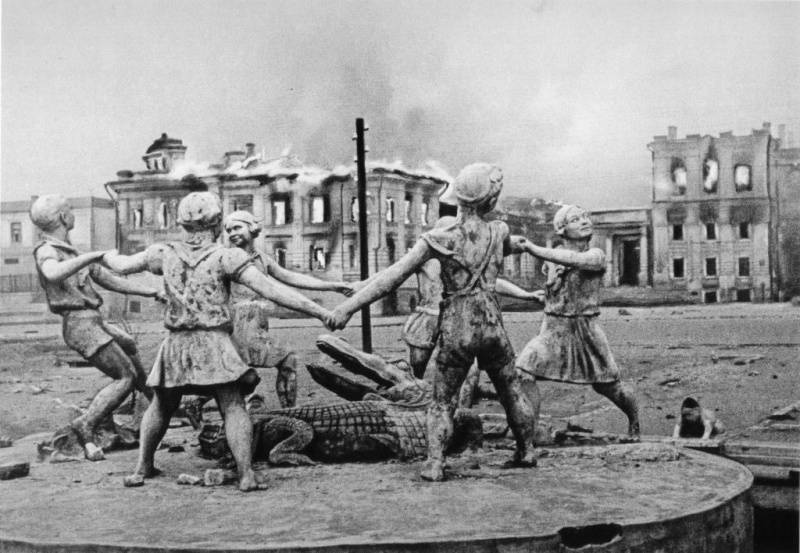
The famous photo is the fountain “Children's round dance” on the station square of Stalingrad after a raid by fascist aviation. Station bombed 23 August 1942 of the year
On September 1, the right flank of the 6 of the German army was connected with the left flank of the 4 tank armies in the area of Stary Rogachik. Since that time, the main forces of Paulus and Gotha were aimed mainly at the central part of the city, along the Kalach-Stalingrad and Stalingrad-Kotelnikovo railways. On the morning of September 3, the Germans launched an offensive on the whole front. By noon on the left flank of the 64 Army, the enemy managed to cross the River Chervlyonaya and break through the defenses near the villages of Tsybino and Nariman. At the site of the 62 Army, overcoming the Soviet positions on the Rossoshka River, the Germans took the Basargino junction line. Soviet troops with heavy fighting retreated to the last position, to Stalingrad. The army suffered heavy losses, in some divisions only a handful of 500-1000 fighters remained. On September 3-4, the front command was evacuated to the east bank of the Volga.
Thus, in early September, German troops broke through the inner contour of the city and seized certain areas in its northern part. The enemy continued to persistently rush to the center of the city in order to completely cut off the Volga River - this most important communication of the USSR.
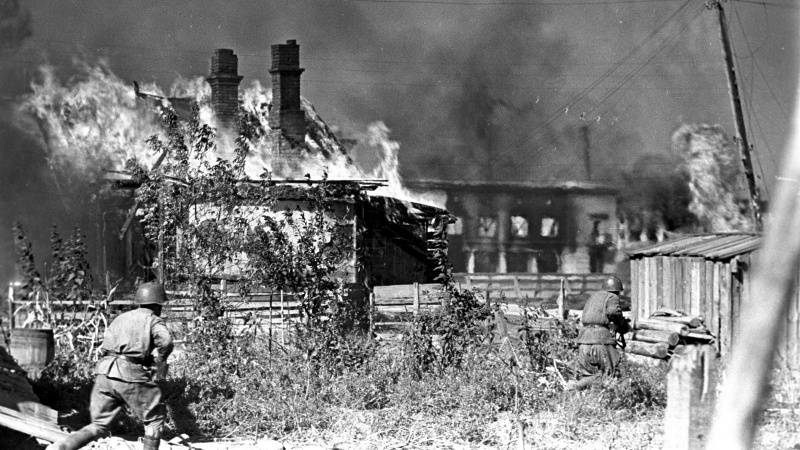
The Red Army soldiers in a battle near a burning house in Stalingrad
At this time, the Soviet command was hastily preparing a new counterstrike, which would ease the pressure of the enemy on the city. For his organization, the appointed 26 of August to the post of Deputy Supreme Commander-in-Chief, General of the Army GK Zhukov, arrived from Moscow. At this time, three armies were concentrated north of the city: the 24-I Army, Major General D.T. Kozlov, as part of five rifle divisions and one tank brigade; The 66 Army under the command of Lieutenant-General R. Ya. Malinovsky — six rifle divisions and four tank brigades; The regrouping and staffing of the 1-th Guards Army of K.S. Moskalenko ended, now it had eight rifle divisions. The newly created 16-I Air Army Major General S. I. Rudenko was included in the Stalingrad Front. Also left-flank units of the 4 tank army were involved in the operation. The main objective of the operation: to defeat the enemy grouping that had broken through to the Volga with a powerful flank strike, to unite with the troops of the 62 Army and restore the line of defense common with the South-Eastern Front.
We were preparing for the operation in a hurry, so we decided to launch the offensive only with the 1-th Guards Army, the rest of the armies could attack no earlier than September 5. As a result, the upcoming counter-attack had all the shortcomings of the former counter-attacks of the Red Army. Thus, the order to redeploy to the Loznoye area, General Moskalenko received only 30 of August. The battle task to him was brought personally by Zhukov 1 of September, and it was ordered to launch an offensive in the morning of the next day. That is, there was no time for normal preparation of the operation, reconnaissance, organization of interaction with other compounds, aviation, etc. Only the lack of fuel made it possible to postpone the start of the operation for a day. Moskalenko was handed over to battered troops from the disbanded group of General Kovalenko, including the 4 and 16 tank corps. Of the armored formations, only two full-blooded tank brigades were completed. In addition, the 7 tank corps of General Rotmistrov was transferred to the army. The corps made an 200-kilometer march from Serebryakovo station and concentrated 2 September north-west of Stalingrad, i.e., it was actually put into action on the move, not even knowing where the enemy was, let alone his defense system. It is clear that the outcome of such a counter attack was obvious. German troops were able to fend off such enemy actions.
3 September 1-I Guards Army launched an offensive. She started it without a full-fledged artillery and aviation training and support, not having time to pull up all the forces and means. The Germans had information about the concentration of Soviet troops and the direction of their strike. Paulus saw his weak points well and strengthened the left flank in advance, creating here a powerful fire system and echeloned defense with strong points. Moreover, just before the beginning of the Soviet operation, the Germans inflicted artillery attack on the divisions that were concentrated on the lines of attack, causing them great damage, and when the Russians went on the offensive, they threw aviation against them. As a result, the Soviet divisions advanced only a few kilometers and were stopped. The next day, Moskalenko brought the second echelon into battle, but also without much success. Again effectively operated German artillery and aircraft.
With the directive from 3 of September, the General Headquarters demanded decisive action from Zhukov: “The situation with Stalingrad has deteriorated. The enemy is located three versts from Stalingrad. Stalingrad can take today or tomorrow if the Northern Group does not provide immediate assistance. Demand that the commanders of the troops, to the north and north-west of Stalingrad, immediately strike the enemy and come to the aid of the Stalingradians ... Delaying is now tantamount to a crime. ”
September 5 Zhukov brought the 24 and 66 armies into battle on the right and left flanks of the Guards Army. The situation was similar to the Guards army: the troops entered the battle directly from the 50-kilometer march, reconnaissance did not reveal the enemy’s grouping and defense system, the artillery failed to conduct full training and suppress the enemy fire system. During the day, German aircraft mainly dominated the sky, while Soviet aircraft acted most often at night. Therefore, to break through the enemy defense failed. Our divisions have advanced 2-4 km. Even 10 days Soviet divisions tried to break through the enemy defenses. Our troops washed with blood, but failed to complete the task. The losses were huge. In particular, in the 7 tank hull Rotmistrov in the ranks of the 191 tank there are only 15 combat vehicles left, the compound had to be brought to the rear for replenishment.
As Rokossovsky noted: “... during 12 days, the troops stubbornly, straightforwardly and ineptly sent for strikes in the forehead, fought in a constant grouping”. On September 12, Zhukov was forced to report to Stalin about the failure of the operation: “... The connection with the Stalingradians was not possible because we were weaker than the enemy in artillery and aviation relation ... The situation at Stalingrad forced us to introduce 24 66 and 5.9 into the army, not expecting their full concentration and reinforcement artillery approach ... Such an entry into battle for armies in parts and without means of reinforcement did not give us the opportunity to break through the enemy defenses and connect with Stalingradists ... ”.
Meanwhile, Paulus not only repelled the poorly organized and prepared counterstrike of the Red Army, but also began the assault on Stalingrad itself.
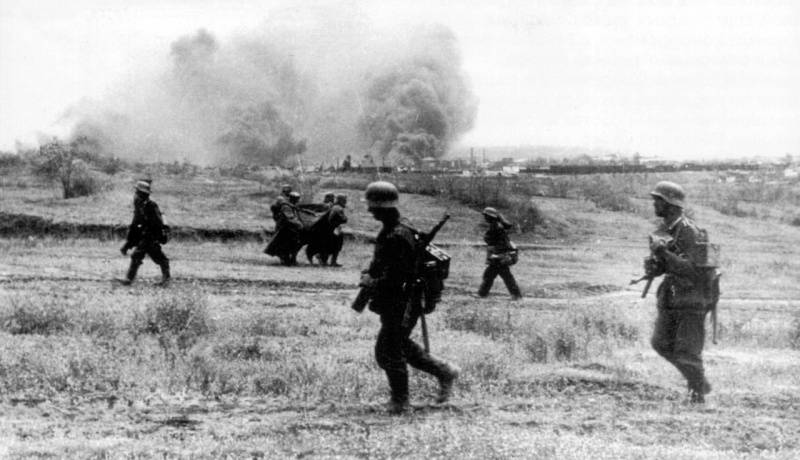
German troops on the outskirts of Stalingrad on the banks of the Volga
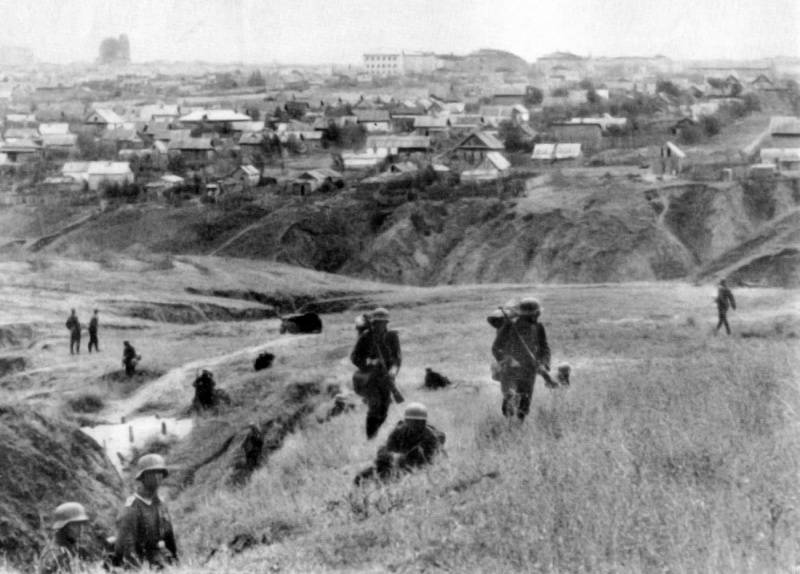
German soldiers in the hills on the outskirts of Stalingrad. Photo source: http://waralbum.ru/
To be continued ...
- Alexander Samsonov
- 1942 Campaign
The Third Reich again goes on the offensive.
"The whole Russian front was falling apart ..." Wehrmacht breakthrough in the southern strategic direction
Stalingrad Fortress
1942 year. "The operation in the south develops without stopping"
How the German army broke through to Stalingrad
Expectations to take Stalingrad a sudden blow failed
Breakthrough of the 6 of the German army to the northern outskirts of Stalingrad
Defeat of the Crimean Front
"The spirit of optimism ... vital at the command post of the front." Kharkov disaster of the Red Army
Khrushchev dumped all the blame for the Kharkov catastrophe on Stalin
How the Wehrmacht stormed the Caucasus
Battle for the Caucasus: no invasions from land
The battle for the "black gold" of the Caucasus
How failed operation "Edelweiss"
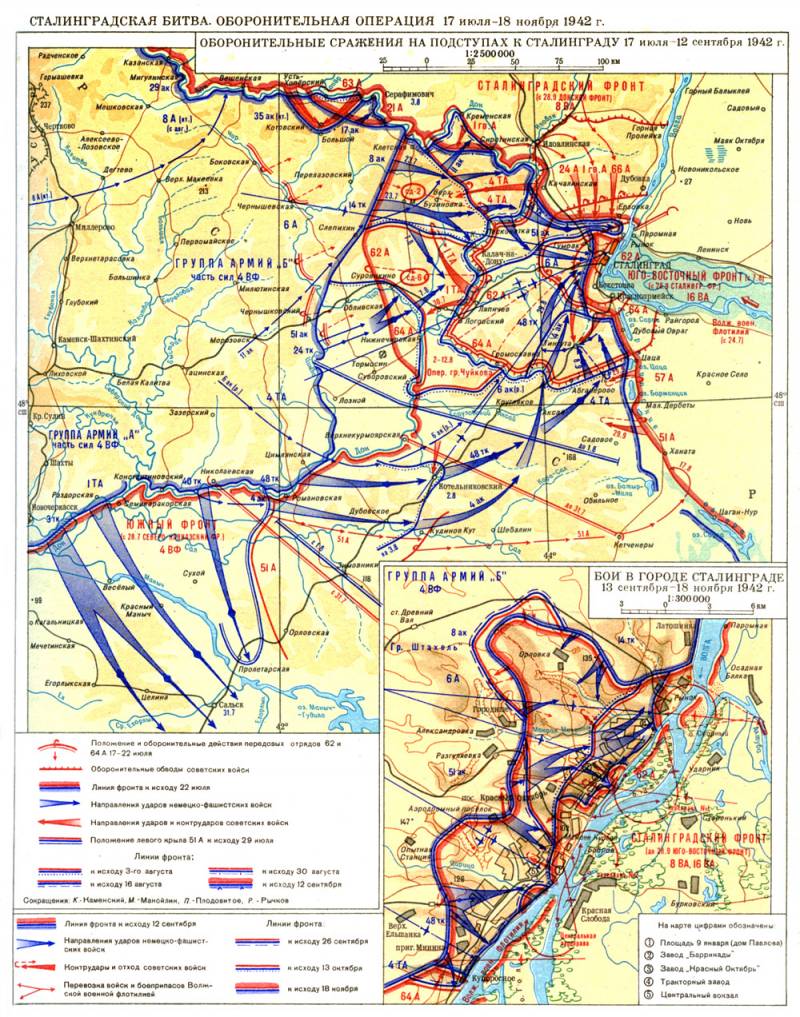
Information